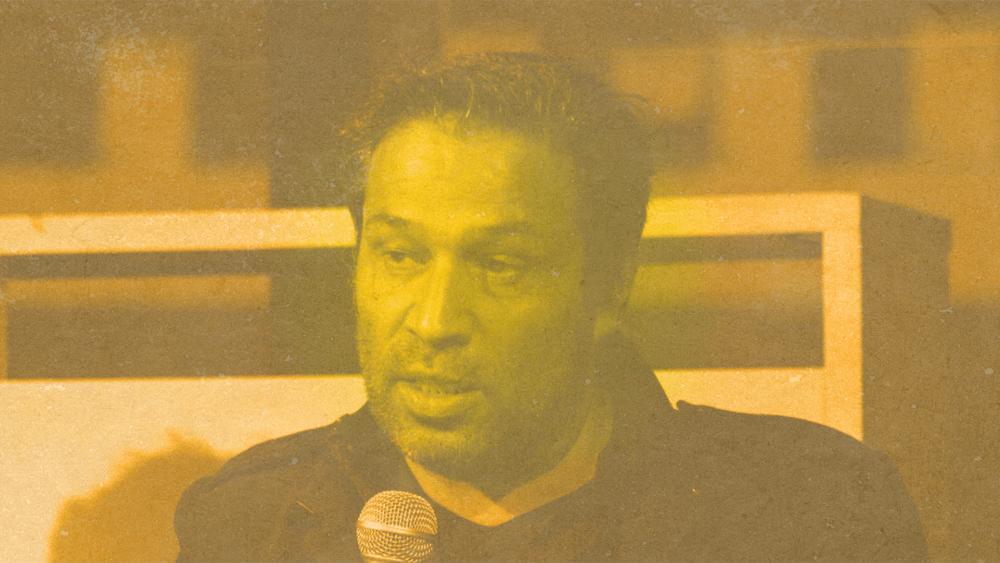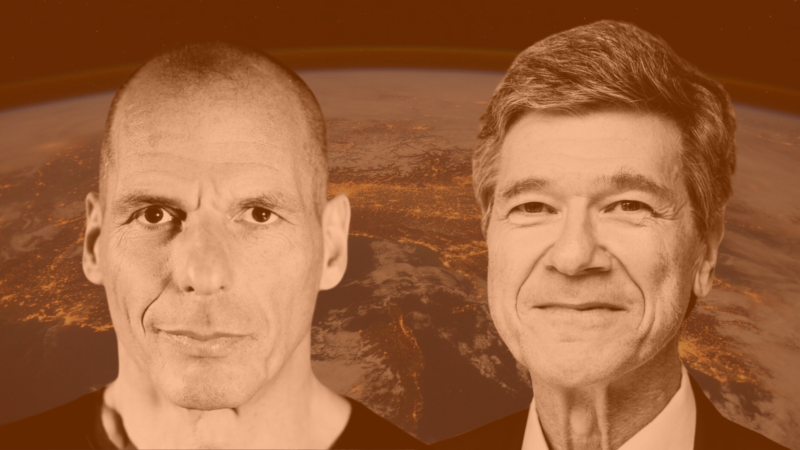After demonstrating how central developments in Iran have been in world affairs since the 1950s, and especially since 1979, Shoja Azari asks the largest and most pertinent of questions: Will the international left once again betray the Iranian people?
The 1979 Iranian revolution coincided with the emergence of the neoliberal order and the domination of financial capitalism in the world. Today’s new revolutionary movement coincides with financialised capitalism’s deepest, most profound, crisis since the 1920s.
When the 1979 revolution entered its final stages, and the demise of Shah’s regime seemed inevitable, the US and the West, at the height of the cold war, aligned with the most reactionary factions within the movement, namely, the Islamic fundamentalists led by Khomeini. At the same time, intellectuals and the left until then, the vanguard of the revolution, under the Soviet and Maoist rubric of the fight against Imperialism, found Khomeini’s anti Imperialist posturing in line with their goals and a necessary step in the revolution’s success.
The Shiite Islamic republic was born with its misguided ambition of resurrecting Islamic civilization by adopting, on the one hand, an anti-imperialist rhetoric while, with the other hand, crushing the left and its opposition to theocracy. Ten years later, the Soviet Union had fallen and the neoliberal order was celebrating “The End of History” under the cloud of a rapid expansion, and domination, of financial capital. Among the poor and devastated masses of the Muslim world, the Islamic rhetoric of Iran’s regime seemed like a rare source of emancipatory hope. This, in turn, reinforced and legitimized the Islamists’ predatory expansion in the region inevitably leading to a confrontation with its historical Suni rival and the rise of Isis. Before long, the Islamic Republic faced war on all fronts.
It is essential to understand that the Islamic Republic is a system born out of crisis and maintained by instigating crisis. Because of its anachronistic nature, it oscillates between contradictions within and without that it can neither manage or resolve. The truth is that, despite its irrationality, its backwardness, its reliance on a growing rentier class, Iran’s development since the 1979 revolution has been in line with the new, neoliberal type of capital accumulation. The bitter rivalry between the regime’s so-called reformist and conservative factions has been a push and pull on the nature and path of integration into the world system.
A privatization process has been in full swing since the 1990s, with the reformist faction envisioning foreign investment and integration into the world market (essentially the European Union and the UK) as the only vehicle for containing the crisis. At the same time, the conservative coalition under the military’s dominance (IRGC and Basij), by establishing and controlling a labyrinth of mired enterprises, aim at expansion into regional markets and align itself with China and Russia in accordance to the shifting global geopolitical landscape. The end result has been deregulation, removal of subsidies and an inevitable popular backlash demanding social justice.
The accumulation of wealth and capital under the control of a mafia of the so-called private enterprises, directly in cahoots with the military and government, has resulted in dire poverty, exploitation, child and enslaved labour, and devastation of the environment in Iran. It is, thus, important for Western left-wingers to understand how capital accumulation, neoliberal-style, even in its hybrid Iranian form, is at the heart of the class war and the tensions raging within Iran today. Leftists, worldwide, must not be misled by the anti-imperialist, anti-US posturing into thinking of the vicious Iranian regime as a potential ally.
Looking at the evolution of the regime’s internal tensions, in 2021 the IRGC consolidated its power and, as a result, the conservative faction put the final nail into the coffin of the reformists, who until then had played a critical role in inspiring false hope and providing limited legitimacy to the regime. The West’s systemic crisis in 2008, to this day, its deepening during the pandemic, and now the war in Ukraine have emboldened the theocratic rule to bolster its alliance with China and Russia with the hope of circumventing its internal crisis. What the rulers of the Islamic Republic fail to see is the all-encompassing nature of the neoliberal’s systemic crisis, that has as its integral part China, is a significant factor in perpetuating the war in Ukraine. Consequently, due to this unholy alliance and consolidation of power, Iran now stands on the verge of a new revolution.
The current Iranian uprising has entered its second month, with women and the youth front and center leading the movement. What distinguishes this uprising from numerous others in the past four decades is not only its leadership, but its radical nature. Whereas prior protests were local, concerning multiple cultural, ethnic, and economic grievances by different groups, this one is significant for its unifying character and aim of dismantling the regime. Every indication points to the burgeoning momentum toward a full-scale social revolution and reorganization of society on a different scale and order that can offer a new development model and inspire the Global South and beyond. Iran stands at a particular historical juncture imbued with the opportunity to exploit the engulfing neoliberal crisis and the redrawing of the world’s geopolitical map. Can the international left seize this opportunity to shed its old and tired shell and imagine a novel narrative that can inspire the youth of Iran, who are the movement’s driving force? Can “Another Now” be at hand for Iran?
Let’s take a close look at the anatomy of this historic opportunity. Ironically, the reactionary and anachronistic nature of the Islamic Republic has given it semi-autonomy from the financial capital which has penetrated, and subjugated, almost every nation and enterprise around the world to the wizardry of Wall Street bosses. As I already explained, this does not mean that Iran is immune to neoliberal-style capital accumulation, in line with the global paradigm, exacerbating class conflict and environmental destruction. In the past four decades, the Islamic Republic has crushed all opposition and undermined all civil and labour organizations through its embedded fascistic organizations employing paramilitary lumpen gangs and revolutionary guards. Let us not forget that the success of Islamists in hijacking the 1979 revolution was mainly due to their ability to a fascist-style mass mobilization with religious zeal to overpower descent with brutality instigating fear. Even as the regime lost the masses, it has institutionalized its terror gangs in a labyrinth of inconspicuous force utilising multiple command centers.
The lack of viable opposition, political parties, and civil or organized labour may make the path of the revolution costly and arduous. Still, it opens up the opportunity for a new narrative and the possibility of novel civil society organization. Given our experiences with from Occupy Wall Street, the Arab Spring and current movements in Latin America and elsewhere, the left should not only acknowledge the nature and reality of these contemporary movements but see it in accordance with the shifting paradigm and the necessity of envisioning the future society at large. If successful, these rather unarticulated youth-led movements can finally culminate in a full-scale social revolution, turning Iran into a genuine laboratory for dreaming about the future.
The revolutionary movement in Iran lacks vertical integration and classic leadership. Yet, one month in its making, it demonstrated a high degree of organization and the presence of multiple leadership centers. The revolutionaries in Iran have learned through experience that the only way they can fight the fascistic operation of the regime is through a war of attrition. Youth groups in multiple locations in the cities and throughout the country often assemble at night, take control of the streets, and, in many instances, engage the police in battle. Almost every university in the country has become the scene of daily demonstrations spreading fast to high schools. The regime, frustrated and unable to quell this asymmetrical battle, has become increasingly more brutal, beating, kidnapping, and opening fire on children. Despite the regime’s crackdown on newspapers and bloggers and shutting down the internet, the news, images, and videos spread wide and fast, uniting people in their rage against the regime and shattering its religious base. In solidarity with the youth, workers in many industries are on strike, though with a lack of unions and strike funds, this can be challenging unless circumvented through international solidarity.
The killing of the 17 years old Mahsa Amini ignited the current unrest. Besides awakening the youth, it provided an important symbol that helped congeal a sense of unity throughout Iran. Amini was a young woman but also a Sunni Kurd. Besides the oppression of women, the regime has brutally suppressed Kurds, Sunnis, and all national minorities in Iran. The government’s propaganda machine, sowing the fear of the country’s disintegration, had managed to manufacture silent consent among the majority population. The sympathy for the young woman’s brutal killing on her visit to the capital, Tehran, mitigated the ethnic divide at once. The Kurdish slogan “Woman, Life, Freedom” was immediately adopted as the revolution’s national anthem.
Even more surprising was how the killing of Mahsa Amini and the slogan “Woman. Life. Freedom.” hit a sensitive cord internationally. #Mahsa Amini and the accompanying slogan broke all Twitter records, passing 200 million retweets in less than two weeks. Celebrities, politicians, sports champions, state ministers, and people from all walks of life poured their support internationally. The news of killing and brutality coming from the Islamic Republic has been abundant to a numbing degree for many years – without progressives taking much notice in the West? What was it that resonated with this particular killing?
With the rise of right-wing neofascist movements in America and Europe, the organized assault on women and minority rights, the increase in surveillance, and the curbing of freedoms, it is no surprise that the plight of youth in Iran resonates deeply with a cornered populace around the world. “Woman. Life. Freedom.” can be viewed as an all-inclusive moto uniting all the demands of the working class without regressing to old cliches that can neither capture the realities of today’s struggle nor stimulate the imagination to move away from the most divisive trap of identity politics. What remains of the nonconformist left today is either stuck in the past or receding in closed academic circles as warriors defending identity and social justice devoid of class struggle.
Today, the youth in Iran and the global south have much more in common with their counterparts in Europe, America, China, and Russia than any generation before them, for the apparent reason of internet and social media connectivity. They share the fear of the environmental catastrophe awaiting them, not as citizens of their respective countries but as a human race. They share their disdain for the gerontocracy that rules the planet and has appropriated the resources and the wealth. They value creativity and experience over consumption. In small ways, they have created a shared value economy. Perhaps, ill-fated and naive, their adaptation of bitcoin and cryptocurrency points to their international solidarity, their disappointment with the neoliberal order, and their knowledge and opposition to the power of the financial oligarchy.
It is important to point out that the workers in Iran have assembled and are on strike under the banner of “Woman. Life. Freedom,” confirming the youth’s leadership. These youth are the future working class and have already realized and are forming international solidarity. They rightly know that the oligarchs of all nations are cashing out in unison and are fully united in turning the world into a global police state to keep in check the increasing precariat masses locked in their borders and subjugated.
The current revolutionary movement in Iran is a wake-up call to the left. It calls for international solidarity and opportunity for “Another Now” as Iran gears up for the possibility of yet another social revolution. The oligarchs, harmonious with their state representatives in the West, have been waiting for forty years and are lining up to take advantage of Iran’s vast market while the left watches from the sidelines.
Will the left once again betray the revolutionary aspiration of the Iranian people?
Shoja Azari, is an Iranian visual artist and filmmaker based in New York, working with Sherin Neshat, his life-long partner and comrade, on art projects of note and substance. Their last project is Land of Dreams, a magnificent new film set in the United States which takes on an enhanced meaning regarding the New Iranian Revolution.
Do you want to be informed of DiEM25's actions? Sign up here















